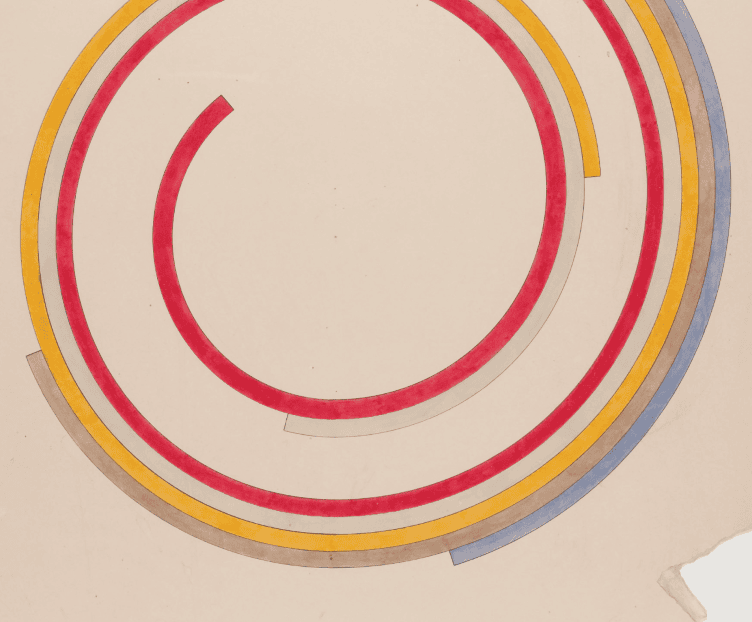From The Study of History in Schools (1898)
By Charles H. Haskins1
In France, as elsewhere, history is a comparatively recent addition to the subjects of the secondary curriculum. Long taught simply as an unimportant adjunct of the ancient languages, it is only in the course of the present century, and largely for the purpose of stimulating patriotism, that it has gained the right to an independent place in secondary schools. The desire to develop patriotic emotion by familiarity with the nation’s past still occupies in France, as in Germany, an important place in the minds of secondary teachers; but a broader conception of the aims of historical study has spread in recent years and found its expression in the official instructions issued in connection with the course of study. History, they declare, contributes to the education of the mind by exercising the memory, developing the imagination, and training the judgment. It contributes to moral education by cultivating the love of truth and preparing youth for their civic duties. “To give the pupil an exact idea of the successive civilizations of the world and definite knowledge of the formation and growth of France; to show him the action of the world on our country and of our country on the world; to teach him to render to all peoples their just dues, to widen the horizon of his mind, and finally to leave him in possession, not only of an understanding of the present condition of his country and of the world, but also of a clear notion of his duties as a Frenchman and as a man-such is the function of history in education.”2
The French system of public secondary instruction comprises two types of schools-the lycées, schools maintained and directed by the central government, of which there are now about 100 distributed throughout France; and the collèges, local high schools, which receive some assistance from the general treasury, and are usually less completely equipped than the lycées. For the purposes of the present report, however, the two institutions may be classed together, as the programme of studies is the same in both. The regular course of the lycée covers ten years, but as the studies of the first three years are identical with those of the elementary schools, the pupil does not enter the lycée proper until he arrives at the class of the sixième, where he begins Latin if a classical student, or German if he be a “modern.” This stage is ordinarily reached at the age of 11, so that the boy who spends seven years in the lycée will complete the course and present himself for his bachelor’s examination at 18. To state the matter in American terms, the French boy spends in the lycée the period that the American boy spends in the high school, plus the last year or two years of the grammar grade and the first year or two of college, but he reaches the close of his lycée course about two years earlier than the American youth comes to the corresponding point in his education.3
Throughout the whole course of the lycée, as well as in the three preliminary years, an hour and a half a week is devoted to history and an hour to the related subject of geography, except in the last year, where from two to four hours are given to history. The total number of hours varies from fifteen to twenty-two, according to year and course, decreasing in the later years of the classical course, but remaining undiminished in the modern, so that the proportion of time devoted to history, which is but 7 1/2 per cent in the lower years, rises to twenty or even more in the last year. The total number of hours of history for the entire ten years is sixteen and one-half for classical and literary and thirteen and one-half for scientific students. In the elementary classes the historical instruction is necessarily of all informal character, and consists of biographical narration in the first year, followed by a two years’ survey of the history of France studied biographically. Then with the grammar division of the lycée begins the systematic and continuous study of the world’s history. Three years are devoted to the history of the Orient, Greece, and Rome, and the remaining four years are occupied with the history of mediæval and modern Europe, studied with special reference to France and divided into the following yearly blocks: 375 to 1270, 1270 to 1610, 1610 to 1789, and 1789 to the present. This is the programme for classical students. For the “modern” course, which is one year shorter, Oriental and Greek history are combined in one year, and in the last year additional instruction is offered in. the general history of art and civilization and in the elements of civil government and political economy.
The most important feature of this programme is that it affords a comprehensive survey of the world’s history in its chronological development from the earliest period down to the present. In contrast to the two “concentric circles” of the German gymnasium the pupil is taken over the field but once, so that a fuller treatment is possible in any one year; but the thorough review of the German system is lost, much to the detriment of the subjects studied early in the course. In other respects the general distribution of time is much the same as in the Prussian programme, except that in the one case it is France, in the other Germany and Prussia, that forms the center of study in mediæval and modern times. The existing arrangement seems on the whole to be popular in France, though some prefer the German “circles,” and others demand for history, apt some stage in the course, the preponderant place that rhetoric and philosophy now have in the last two years, urging that in no other way can the disciplinary value of history be realized, as a counterpoise to the formal studies of language and mathematics, and the only study which, by dealing with concrete social facts, brings the pupil into proper relations with his civic environment.
Besides prescribing the general character of the course in history, the official programme contains an outline of the topics to be studied in each class, accompanied by brief suggestions as to the mode of treatment. The plan of each year’s work is drawn up with considerable care, but it is designed to serve as a guide to the teacher rather than narrowly to control him.
While there has been a noticeable improvement in the course of study in history since the middle of the century, the methods of instruction are still largely tinged with the spirit of formalism and routine inherited from the Second Empire. The lycée is still a semi-military institution, which has much of the appearance of barracks, and calls its pupils to class by the beating of a drum; and while professors are now free to dress and wear their beards as they choose, they have not all grasped the full consequences of the idea that the pupil is to be trained as a citizen and not as a subject. Indeed, pedagogical problems in general have received comparatively slight attention in France, and questions of what to teach and how to teach in history have been very little considered. A common practice is to dictate a brief summary of the hour’s work, expand this into a lecture while the pupils take notes, and question them at the beginning of the next hour on the lecture and some pages of the text-book. The professor speaks from a raised platform, and the small blackboard is reserved for his personal use only. The scholars usually show interest, and they may be even required to prepare supplementary papers, but their attitude is largely passive, and the system lacks the advantages of the steady German drill on hard facts or the freer use of material characteristic of good American teaching. These conditions are, however, beginning to pass away as the professors who have grown old under the dictation system give place to younger men. It is coming to be realized that the pupil should get his fundamental facts from a text rather than from the instructor’s lecture, and that the time spent in the class-room need not be wholly given up to the alternate repetition of statements by teacher and pupil. In addition to the text-book, classes may now have at their disposal excellent illustrative matter, such as is contained in the Albums historiques of the Middle Ages, edited by Parmentier, and the Lectures Historiques4 designed for supplementary reading. In one way and another fresh life is being infused into the study of history, and in some schools remarkable results have already been attained in securing the pupils’ active participation in the work.5
The professors of history and geography in lycées-the subjects are usually combined-are appointed on the basis of a competitive examination. After having taken his baccalaureate degree the candidate must continue his work for two years, studying Latin, Greek, and French, as well as his specialty, until he receives the licence. Then comes a further year spent largely in the writing of a thesis, followed by a year’s strenuous preparation for the final test, the agrégation, for which the competition is very keen. As the examination bears upon the candidate’s ability to present a subject before classes, as well as upon his knowledge of history and geography, the preliminary courses include not only lectures and seminaries, but numerous practical exercises in teaching, under the supervision and criticism of professors and fellow-students. The necessary preparation of a teacher of history accordingly consists of a substantial classical education as a foundation and a period of special study of at least four years spent at one of the universities or at the École Normale Supérieure, the whole tested by a rigid examination.
Such, in brief outline, are the general features of historical instruction in the secondary schools of France. The French have realized the importance of history as an essential element in the secondary curriculum, they have made provision for its systematic and continuous study throughout the whole of the school course, and they have established a system which assures the selection of well-trained teachers. In these respects we can profit by their example; but at present we have little to learn from their methods of instruction beyond the suggestions that may be derived from their clear and well-ordered text-books6 and from the arrangement of topics in the programme, which Matthew Arnold declared no educated man could read “without profit-without being reminded of gaps in his knowledge and stimulated to fill them.”7 We must, however, remember that it is only in recent years that historical studies even in the universities have been placed upon a substantial basis in France, so that it is too soon to expect the best results in secondary teaching. Already there are indications that as the possibilities of historical instruction become more generally recognized and the improvements in higher education make themselves more widely felt in the schools, it may be well worth the while of American teachers to watch the progress of historical studies in France; for in spite of all the differences in conditions in the two countries the fundamental problem of the secondary teacher of history is the same in France as in America, namely, how to make the study of history tell most effectively for the general culture and the civic training of the future citizens of a great democracy. In solving this problem we shall need all the experience of both sides of the Atlantic.
- The following report does not profess to represent the results of a detailed examination of a considerable number of schools. The information upon which it is based has been gathered in the course of two visits to France, partly from official programmes and other printed sources, partly from observation of classes in lycées and courses for the training of teachers, and partly from conversation with French professors who possess special familiarity with the conditions in secondary schools. I regret that the number of classes visited was not larger; but there is great uniformity of system and administration in French education, and 1 am informed by competent authority that wider observation would not have materially modified the account here given. The official programmes and instructions are published by Delalain at Paris. The brief appendix on “The secondary teaching of history in France” in the Introduction to the Study of History by Langlois and Seignobos is excellent, and many of the suggestions will be found valuable outside of France as well. Altamira’s discussion of history in secondary schools in his Enseñanza de la Historia (chapters 8 and 9) has much to say of France. [↩]
- Lavisse, A propos de nos écoles, 81; instructions concernant l’enseignement secondaire classique, xlvii-1. The portion of these instructions which relates to history was prepared by Lavisse, and may be found, somewhat abridged, in his A propos de nos écoles, 77-107. [↩]
- In what is said above, and in this account generally, the institutions for boys are taken as the type. The secondary schools for girls have a course of five years, divided into two “periods,” and history has an allotment of two hours a week throughout. In the first period, for pupils between 12 and 15, the programme covers the history of France, with “summary notions of general history.” In the second period a survey of the history of civilization is given. While in general the same methods of instruction prevail in both classes of schools, their application to girls’ schools is necessarily conditioned y the more general character of the course in history and the absence of classical studies from the curriculum. [↩]
- These are published by Hachette. The three volumes for the ancient period consist of an interesting series of sketches of Egyptian and Assyrian life from the competent hand of Maspero, and excellent accounts of the public and private life of the Greeks and Romans y Guiraud. The latter volumes are made up of well-chosen selections from modern historians, grouped according to the programme. The extracts from sources contained in the earlier editions have now been omitted, as they did not seem adapted to this stage of the pupil’s development. [↩]
- See in the Revue Universitaire, June 15, 1896, the examples printed by Seignobos of written work done in a small college in the west of France, and notably the careful and intelligent comparisons of various ancient and modern institutions. [↩]
- The Précis de l’histoire moderne of Michelet, once so popular, has gone out of use, and the famous school histories of Duray are passing. A scholarly series is appearing under the editorship of Monod; the volume by Bémont and Monod on the Middle Ages is excellent, though somewhat beyond the grasp of the boys of 14 for whom it was written. The text-books of Seignobos on the Orient, Greece, and none, published by Colin, are very suggestive, and deserve to be better known in America; see particularly the Supplements à l’usage des professeurs, issued in connection with the volumes on the Orient and Greece. [↩]
- A French Eton and Schools and Universities in France (edition of 1892), 375. [↩]


